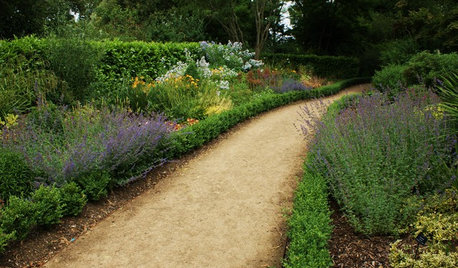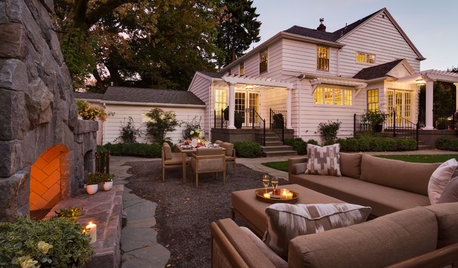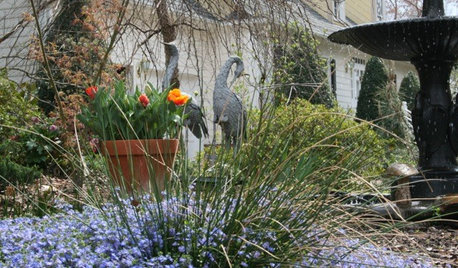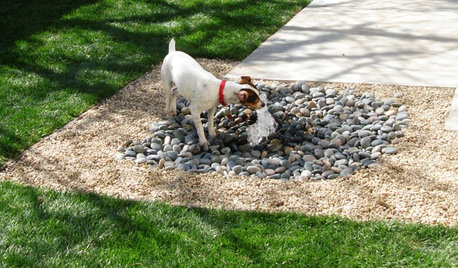Is landscape cloth under a thick layer of mulch necessary?
sfg_newbie
16 years ago
Featured Answer
Comments (17)
joepyeweed
16 years agodavid52 Zone 6
16 years agoRelated Professionals
Windham Landscape Architects & Landscape Designers · Garden City Landscape Architects & Landscape Designers · Berwyn Landscape Contractors · Choctaw Landscape Contractors · Mason Landscape Contractors · North Richland Hills Landscape Contractors · Saint John Landscape Contractors · St. Louis Landscape Contractors · Woodburn Landscape Contractors · Beavercreek Decks, Patios & Outdoor Enclosures · Bonita Decks, Patios & Outdoor Enclosures · Little Rock Decks, Patios & Outdoor Enclosures · Montgomery County Decks, Patios & Outdoor Enclosures · Saint Louis Park Decks, Patios & Outdoor Enclosures · South Lyon Decks, Patios & Outdoor Enclosuresbunkers
16 years agodavid52 Zone 6
16 years agoKimmsr
16 years agokatdog_turf
16 years agoshellva
16 years agomaupin
16 years agobtrflytrvlr
15 years agowiteowl
15 years agobtrflytrvlr
15 years agoannpat
15 years agosfg_newbie
15 years agobtrflytrvlr
15 years agoterreclawson
8 years agokimmq
8 years ago
Related Stories

GARDENING GUIDESHow to Pick a Mulch — and Why Your Soil Wants It
There's more to topdressing than shredded wood. Learn about mulch types, costs and design considerations here
Full Story
GARDENING GUIDESNew Ways to Think About All That Mulch in the Garden
Before you go making a mountain out of a mulch hill, learn the facts about what your plants and soil really want
Full Story
GARDENING GUIDES6 Native Ground Covers for Tough, Dry Spots
Sun beating down on your sandy gravel? Thick shade darkening your clay soil? There’s a ground cover here for you
Full Story
LANDSCAPE DESIGN5 Gravel and Stone Types for a Rockin' Landscape
Give your garden design some textural bam with pebbles, granite, river rocks and other permeable materials
Full Story
GARDENING AND LANDSCAPINGHouzz Survey: See What Homeowners Are Doing With Their Landscapes Now
Homeowners are busy putting in low-maintenance landscapes designed for outdoor living, according to the 2015 Houzz landscaping survey
Full Story
GARDENING GUIDESGarden Myths to Debunk as You Dig This Fall and Rest Over Winter
Termites hate wood mulch, don’t amend soil for trees, avoid gravel in planters — and more nuggets of garden wisdom
Full Story
SOUTHEAST GARDENINGSoutheast Gardener's January Checklist
Resolve to see your garden with fresh eyes this year while you plant, plan and take care of necessary maintenance
Full Story
GROUND COVERSGround Force: 10 Top Ground Covers for Your Garden
Protect your soil from weeds and drought this summer with a living mulch of ground covers
Full Story
LANDSCAPE DESIGNIs It Time to Consider Fake Grass?
With more realistic-looking options than ever, synthetic turf can be a boon. Find the benefits and an installation how-to here
Full Story
MOST POPULAR8 Backyard Ideas to Delight Your Dog
Cue the joyous soundtrack. These pet-friendly landscape and garden ideas will keep your pooch safe, happy and well exercised outdoors
Full StorySponsored
Columbus Design-Build, Kitchen & Bath Remodeling, Historic Renovations
More Discussions







bob64